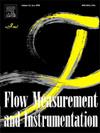Numerical investigations of cylindrical weir-gates with a flow extender
IF 2.3
3区 工程技术
Q2 ENGINEERING, MECHANICAL
引用次数: 0
Abstract
This study provides a comprehensive analysis on the hydraulics of flow over cylindrical weir-gates with and without a flow extender, utilizing a validated numerical model. The model, validated against recent experimental data, examines the effects of various parameters including the angle of flow extender, gate opening, and submergence levels on flow characteristics, energy losses, and discharge reduction factors. The findings indicate that Results show that weir-gates equipped with a flow extender experience a notable reduction in energy losses—up to 35 % for flow extenders with angles between 0° and 10°, compared to only 19 % for weir-gates without a flow extender. While the modest impact of the flow extender on discharge capacity, it effectively minimizes downstream vortices and energy dissipation. Additionally, three distinct submerged flow regimes (Surface Jump, Surface Wave, Deeply Submerged Flow) were identified, illustrating the behavior of flow with varying submergence levels. The modular limit, marking the onset of submerged flow, decreases significantly with larger gate openings, showing a maximum reduction of 64 %. The discharge reduction factor also varies with gate opening, remaining stable under moderate conditions and then sharply declining with increased submergence. These insights are essential for optimizing the design and performance of cylindrical weir-gates across different hydraulic conditions, thereby enhancing their efficiency and effectiveness in practical applications.
带扩流器的圆柱形堰式闸门的数值研究
本文利用一个经过验证的数值模型,对带和不带流量扩展器的圆柱形堰闸的水力学特性进行了全面分析。该模型与最近的实验数据进行了验证,研究了各种参数对流动特性、能量损失和流量减少因素的影响,包括流动扩展器的角度、闸门开度和淹没水平。研究结果表明,安装气流扩展器的堰式闸板的能量损失显著降低,对于角度在0°到10°之间的气流扩展器,能量损失可降低35%,而没有安装气流扩展器的堰式闸板的能量损失仅降低19%。扩流器对流量影响不大,但能有效地减小下游涡旋和能量耗散。此外,确定了三种不同的水下流动形式(表面跳跃、表面波浪、深度水下流动),说明了不同淹没水平下的流动行为。随着闸门开度的增大,标志着淹没水流开始的模块化极限显著降低,最大降幅为64%。流量减小系数也随闸门开度的变化而变化,在中等条件下保持稳定,随着淹没度的增加而急剧下降。这些见解对于优化圆柱堰闸在不同水力条件下的设计和性能至关重要,从而提高其在实际应用中的效率和有效性。
本文章由计算机程序翻译,如有差异,请以英文原文为准。
求助全文
约1分钟内获得全文
求助全文
来源期刊

Flow Measurement and Instrumentation
工程技术-工程:机械
CiteScore
4.30
自引率
13.60%
发文量
123
审稿时长
6 months
期刊介绍:
Flow Measurement and Instrumentation is dedicated to disseminating the latest research results on all aspects of flow measurement, in both closed conduits and open channels. The design of flow measurement systems involves a wide variety of multidisciplinary activities including modelling the flow sensor, the fluid flow and the sensor/fluid interactions through the use of computation techniques; the development of advanced transducer systems and their associated signal processing and the laboratory and field assessment of the overall system under ideal and disturbed conditions.
FMI is the essential forum for critical information exchange, and contributions are particularly encouraged in the following areas of interest:
Modelling: the application of mathematical and computational modelling to the interaction of fluid dynamics with flowmeters, including flowmeter behaviour, improved flowmeter design and installation problems. Application of CAD/CAE techniques to flowmeter modelling are eligible.
Design and development: the detailed design of the flowmeter head and/or signal processing aspects of novel flowmeters. Emphasis is given to papers identifying new sensor configurations, multisensor flow measurement systems, non-intrusive flow metering techniques and the application of microelectronic techniques in smart or intelligent systems.
Calibration techniques: including descriptions of new or existing calibration facilities and techniques, calibration data from different flowmeter types, and calibration intercomparison data from different laboratories.
Installation effect data: dealing with the effects of non-ideal flow conditions on flowmeters. Papers combining a theoretical understanding of flowmeter behaviour with experimental work are particularly welcome.
 求助内容:
求助内容: 应助结果提醒方式:
应助结果提醒方式:


